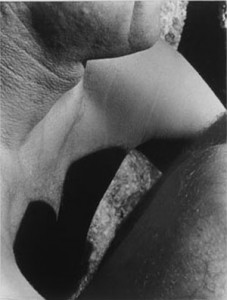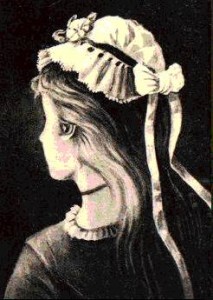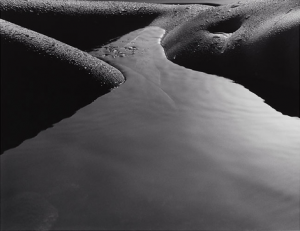Optical Confusion Adds Interest to Your Work
Okay, so I missed the boat on this by a little bit, but I think it bears discussion anyway. Earlier this month, an exhibition came to a close at the Yale University Art Gallery called “First Doubt: Optical Confusion in Modern Photography.” Optical confusion refers to that effect you get when you look at something and it isn’t immediately apparent what it is. The reaction is best when the subject matter is common and well-known, but portrayed in an unusual or misleading way.
For example, the photo to the right (which is from the aforementioned show) depicts a man’s chin, neck, chest, and part of his leg. The contrast and cropping, though, make it compositionally more interesting and somewhat more difficult to “figure out,” visually. I wouldn’t suggest that you run about photographing things in ways that nobody can ever puzzle out, or that high art must in some way be confounding to the general public, but you must admit that a composition that makes you scratch your head for a moment is going to hold your interest for that much longer.
The idea of optical confusion is (clearly) not new. I’m sure you’ve all seen the classic young woman/old woman illusion (shown at left), which, once you visually map out both images, seems to randomly flip-flop between the two in the mind’s eye. In photographic composition, this technique of close-cropping and creatively limiting the viewer’s understanding of what they are looking at can be a very powerful tool.
Take, for example, the image below (by Karin Rosenthal, “Belly Landscape,” 1980—which I snagged from The Online Photographer). When I first saw the image, I really thought it was a landscape; some sort of Adams-esque river valley. Of course by stating the title of the piece I’ve pretty much blown the lid on that optical illusion, but if you squint you can probably see it as a river valley again.
Certainly the specific genre of “body landscapes” is one with its fair share of avid creators, and it would be challenging now to forge new territory (no pun intended) within that space. Nevertheless, we can all take a cue from the clever way that the image misleads the eye.
The next time you’re out photographing or sitting in front of Lightroom (you do use Lightroom, right?), think about how you might add tension and interest to a composition through creative cropping, eliminating some of the most recognizable elements from a subject. Just a small tweak is all it may take to transform a solid, representative image into a thoroughly engaging work of optical confusion.
You can also purchase the official book containing selections from the collection used in the Yale University Art Museum show.
 Single-Serving Photo
Single-Serving Photo



Comments